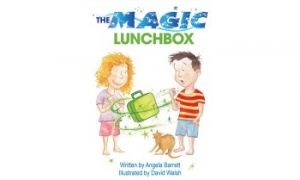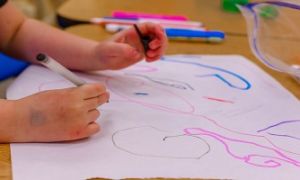A: No, you don’t have to include theorists in every piece of documentation, but referencing them can deepen your practice, especially when aligned with EYLF V2.0 and the National Quality Standard.
Introduction: Why Theory Matters in Documentation
In early childhood education, documentation isn’t just about recording what children do; it’s about making learning visible, intentional, and meaningful. The EYLF V2.0 encourages educators to reflect on theory, pedagogy, and practice to support children’s agency, well-being, and learning. The NQS reinforces this through quality areas that expect educators to demonstrate intentional teaching and critical reflection.
When Including Theorists Is Valuable
If your documentation is meant to:
- Demonstrate pedagogical alignment (e.g., linking practice to EYLF, Vygotsky, Bronfenbrenner, Piaget, etc.)
- Support reflective practice or critical inquiry
- Showcase intentional teaching or theoretical grounding
- Meet assessment or accreditation criteria (e.g., ACECQA, university placements, or professional development portfolios)
Then yes—referencing theorists can:
- Validate your decisions
- Show depth of understanding
- Connect practice to broader educational discourse
When It’s Not Necessary
If your documentation is:
- Primarily observational (e.g., daily journals, anecdotal records)
- Focused on child voice, well-being, or play without needing theoretical justification
- Used internally for planning or communication with families
- Part of symbolic, emotionally intelligent documentation (like your modular inserts or advocacy tools)
Then theorists are optional. You can still embed theory implicitly through your language, without naming it directly. For example:
- “This experience supported co-regulation and social scaffolding.” (Vygotsky)
- “The child’s exploration reflected a strong sense of agency and belonging.” (Bronfenbrenner, EYLF)
EYLF V2.0 & Theorists: Where They Fit
EYLF V2.0 explicitly invites educators to:
- Draw on contemporary theories to inform planning and practice
- Engage in critical reflection that links theory to context
- Support diverse ways of knowing, including First Nations perspectives and child-led inquiry
Referencing theorists like Vygotsky, Bronfenbrenner, Piaget, or Malaguzzi can help articulate:
- Why a learning experience was offered
- How it supports developmental domains
- What pedagogical choices were made
Quality Areas That Align
| Quality Area | Connection to Theory |
|---|---|
| QA1: Educational Program and Practice | Theorists support intentional teaching, planning, and assessment |
| QA3: Physical Environment | Theory informs how environments provoke exploration and agency |
| QA5: Relationships with Children | Attachment and socio-cultural theories guide responsive relationships |
| QA6: Collaborative Partnerships | Theories of family engagement and community learning apply |
| QA7: Governance and Leadership | Leadership draws on pedagogical theory to guide practice |
Practical Examples
Here’s how you might embed theory meaningfully:
-
Observation: “Kai used the blocks to build a tower, testing balance and symmetry.”
Linked to Piaget’s theory of cognitive development and EYLF Learning Outcome 4: Children are confident and involved learners.
-
Planning Note: “This experience was designed to scaffold peer collaboration and co-regulation.”
Informed by Vygotsky’s sociocultural theory and Quality Area 5. -
Reflection Prompt: “What theories of learning are guiding this moment?”
Supports QA1 and EYLF Principle: Ongoing Learning and Reflective Practice. -
Documentation Insert: Include quote cards like
“Children learn through relationships, play, and active exploration.” – EYLF V2.0
“The environment is the third teacher.” – Malaguzzi
You don’t need to name-drop theorists in every document, but using theory as a lens helps you:
- Make your practice visible and intentional
- Align with EYLF V2.0 and NQS expectations
- Advocate for quality, relational pedagogy
Further Reading
Child Theorists and Their Theories in Practice
How To Apply Theorists In Observations
Linking Theories To The EYLF
Incorporating Theorists Into Early Childhood Documentation
Early Childhood Theory Cheat Sheet For Documentation
Child Theorists Posters
References:
ACECQA – EYLF V2.0



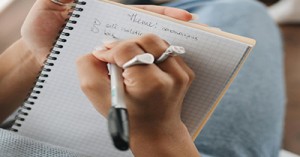
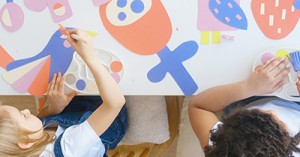
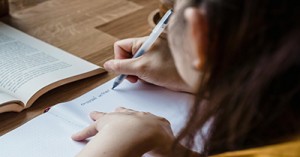

 Here is the list of the EYLF Learning Outcomes that you can use as a guide or reference for your documentation and planning. The EYLF
Here is the list of the EYLF Learning Outcomes that you can use as a guide or reference for your documentation and planning. The EYLF The EYLF is a guide which consists of Principles, Practices and 5 main Learning Outcomes along with each of their sub outcomes, based on identity,
The EYLF is a guide which consists of Principles, Practices and 5 main Learning Outcomes along with each of their sub outcomes, based on identity, This is a guide on How to Write a Learning Story. It provides information on What Is A Learning Story, Writing A Learning Story, Sample
This is a guide on How to Write a Learning Story. It provides information on What Is A Learning Story, Writing A Learning Story, Sample One of the most important types of documentation methods that educators needs to be familiar with are “observations”. Observations are crucial for all early childhood
One of the most important types of documentation methods that educators needs to be familiar with are “observations”. Observations are crucial for all early childhood To support children achieve learning outcomes from the EYLF Framework, the following list gives educators examples of how to promote children's learning in each individual
To support children achieve learning outcomes from the EYLF Framework, the following list gives educators examples of how to promote children's learning in each individual Reflective practice is learning from everyday situations and issues and concerns that arise which form part of our daily routine while working in an early
Reflective practice is learning from everyday situations and issues and concerns that arise which form part of our daily routine while working in an early Within Australia, Programming and Planning is reflected and supported by the Early Years Learning Framework. Educators within early childhood settings, use the EYLF to guide
Within Australia, Programming and Planning is reflected and supported by the Early Years Learning Framework. Educators within early childhood settings, use the EYLF to guide When observing children, it's important that we use a range of different observation methods from running records, learning stories to photographs and work samples. Using
When observing children, it's important that we use a range of different observation methods from running records, learning stories to photographs and work samples. Using This is a guide for educators on what to observe under each sub learning outcome from the EYLF Framework, when a child is engaged in
This is a guide for educators on what to observe under each sub learning outcome from the EYLF Framework, when a child is engaged in The Early Years Learning Framework describes the curriculum as “all the interactions, experiences, activities, routines and events, planned and unplanned, that occur in an environment
The Early Years Learning Framework describes the curriculum as “all the interactions, experiences, activities, routines and events, planned and unplanned, that occur in an environment